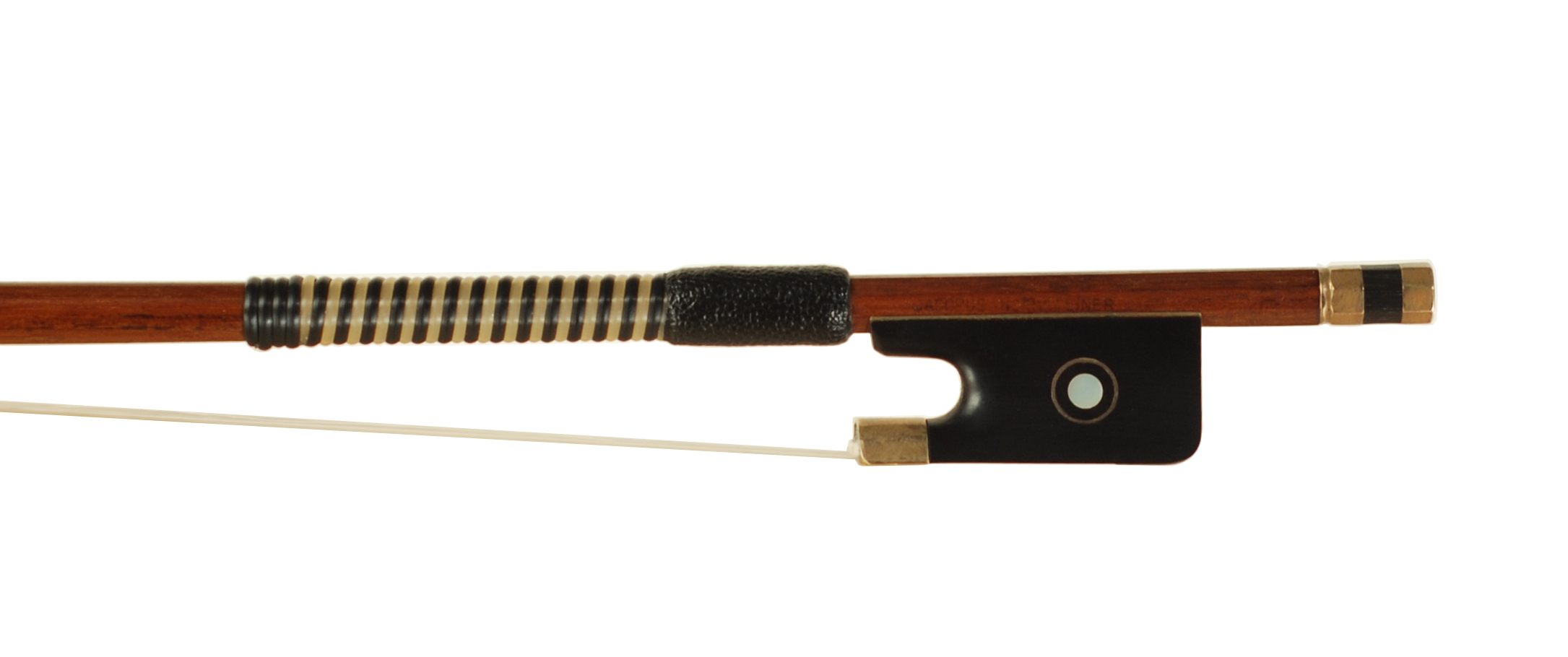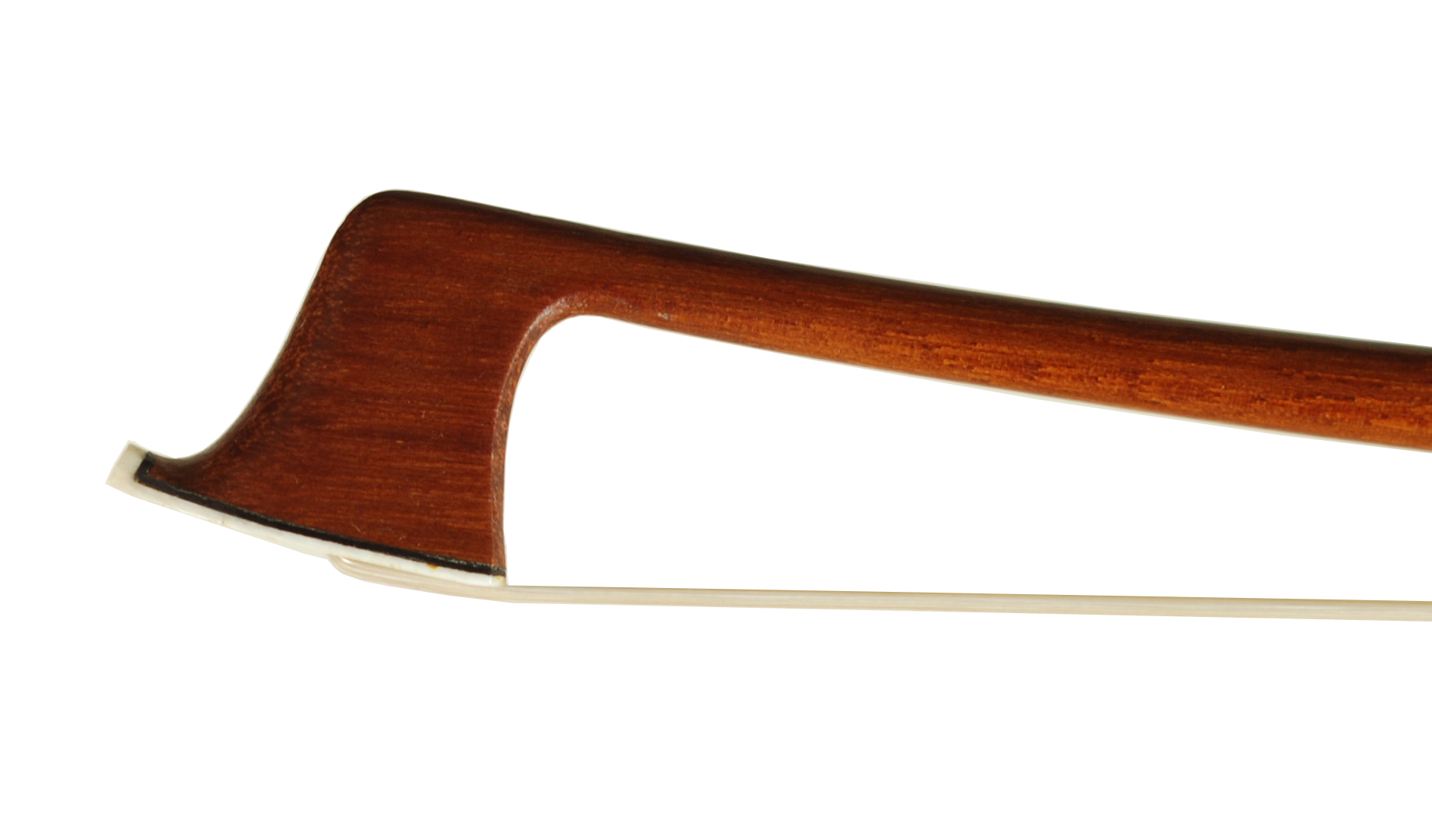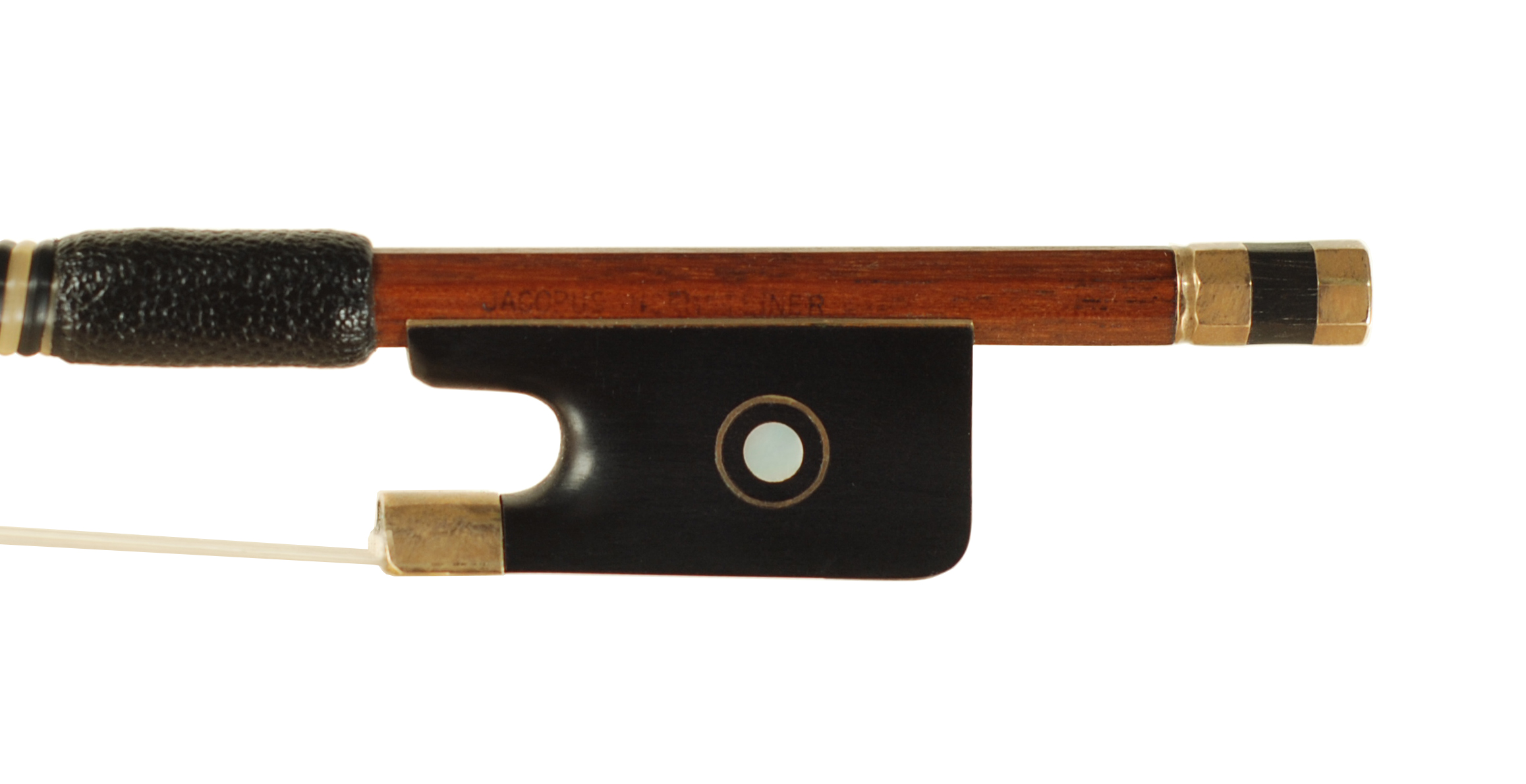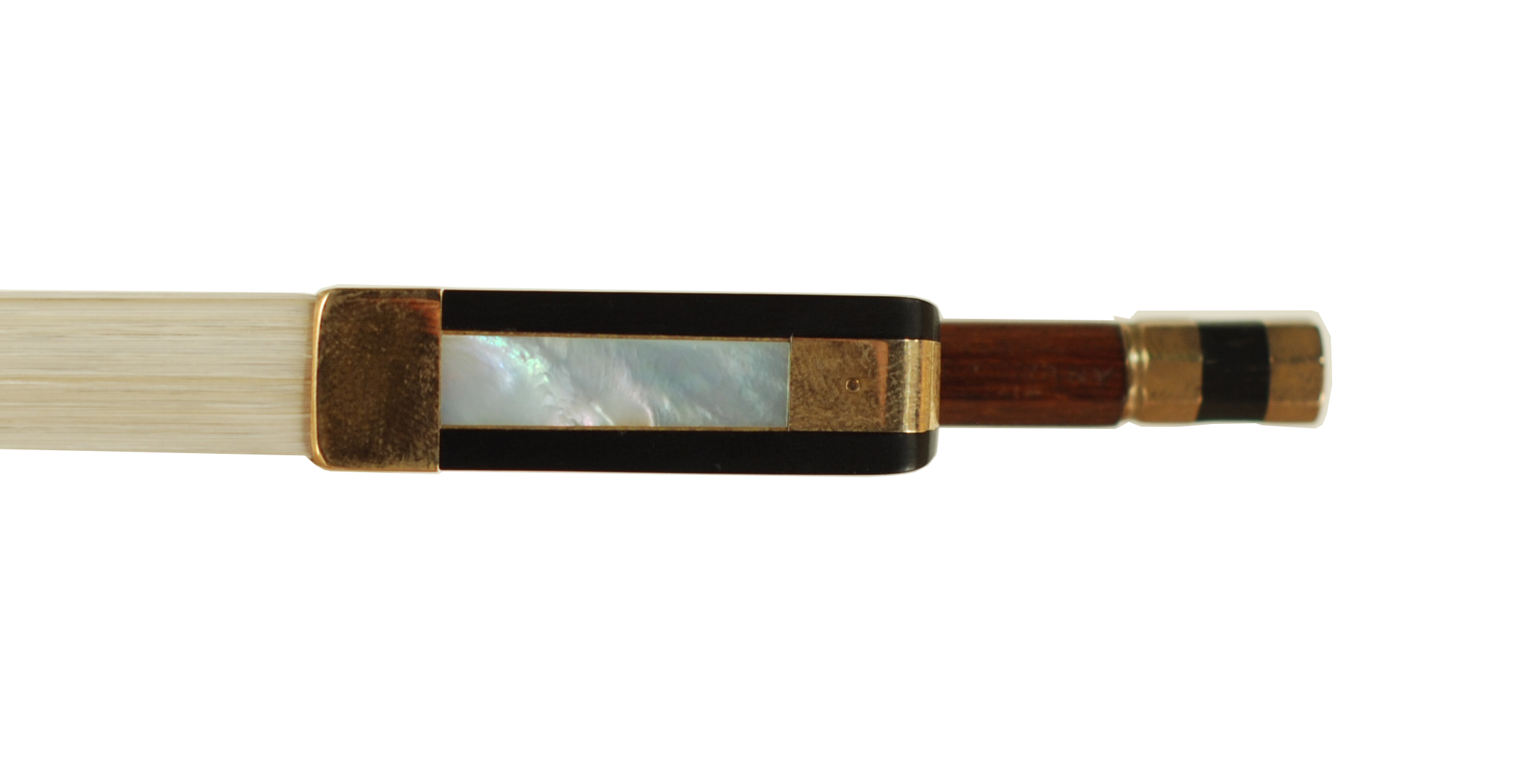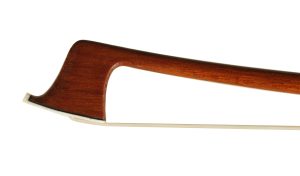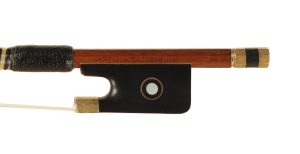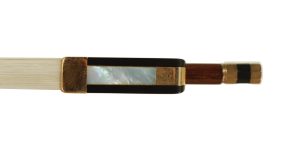Jacobus Hornsteiner Violin Bow – Markneukirchen circa 1920-1930
$900.00
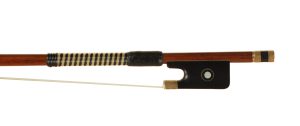
Stamped:
GERMANY – on the butt of the bow
If you might be looking for a firmer/stronger playing pernambuco violin bow, this could be it. You may be looking for a sleeper, no famous maker’s name but a very good playing bow with gorgeous wood, at a good price– this is it. This is a German stick twice my age made for the famous Roth firm in Markneukirchen. I’ve had this stick piled in a large cardboard box with a few hundred other German bows for close to 40 years. A bow made from pernambuco, considered the best wood for a bow. A bow with excellent craftsmanship.
Pernambuco wood from Brazil is at a complete stoppage of use by the Brazilian government. My bow making and collecting friends continually encourage me on to get our collection of great sticks completed and to the showroom. The restorations can take many hours and/or weeks. Much of my work gets put on the back burner when customer violins and bows need to be completed. Customers’ items come first. Currently, I’m on a one-a-week bow restoration rate.
Jacobus Hornsteiner was a name used by the Roth firm in the 1920’s – 1930’s to sell instruments as well as bows to different competing violin shops that were selling instruments in close proximity to each other. This violin bow would have been placed in a case to complete the outfit. Many of these Hornsteiner bows and violins got to our country by way of the Simpson & Fry Musical Company in the 1920’s located in New York City. E. H. Roth II came to New York to manage the Simpson violin department. Roth and another partner bought that company and later moved it to Cleveland. Roth joined Simpson and Fry in 1922. I’m sure this is how this bow got to the states. Ernst Heinrich Roth, born in 1877, had the ideal prerequisites for attaining musical greatness. As a talented musician who played several instruments and had perfect pitch, he began his career by completing his training in the atelier founded by his father, Gustav Robert Roth, in 1873. Ernst Heinrich then studied under violin makers in Austria, Hungary, Russia, and France and later returned to his home country with extensive knowledge of the art. His skill and musical training helped Ernst Heinrich Roth become one of the finest craftsmen of the 20th century – and one of the most successful entrepreneurs in the field. The Hornsteiner stamp was developed to have more products (instruments and bows) sold to more violin shops and music stores from his Markneukirchen workshop.
The stick has some guts and the bow handles very well. A bow with bronze fittings The wood is choice in its grain and color. Old stuff that must have been laying around and/or hiding in someone’s workshop or barn. I went over the entire bow giving it a good cleaning and replacing the winding with some older style whalebone winding I had in my collection of windings. Also, I gave the stick a new leather thumb grip. The tip is all original and in great condition, as is the whole bow. The stick is pernambuco, round in section, and the frog is mounted in bronze fittings. I wish it was gold. The mounted frog flanges out at the base. I like it. It give a player a different feel. The frog is also rounded at the heel. It is a Parisian eye model with subtle pearl eyes and a little color in the mother-of-pearl slide. The lining is held in place by two pins and there is pin work in the heel as well. The bow is finished off with a three-piece end button, with a pearl end and a double turn in the collar. Yes, a good stick for the price.
Weight fully haired 57.4 grams
